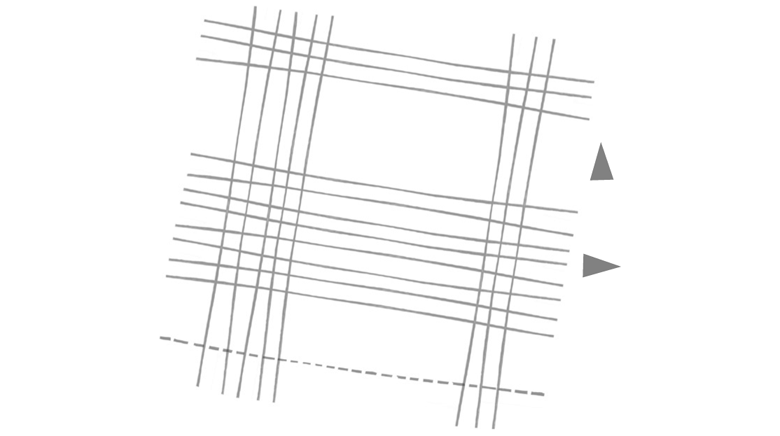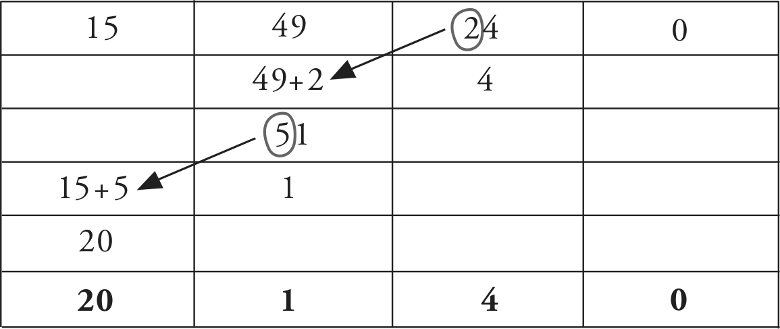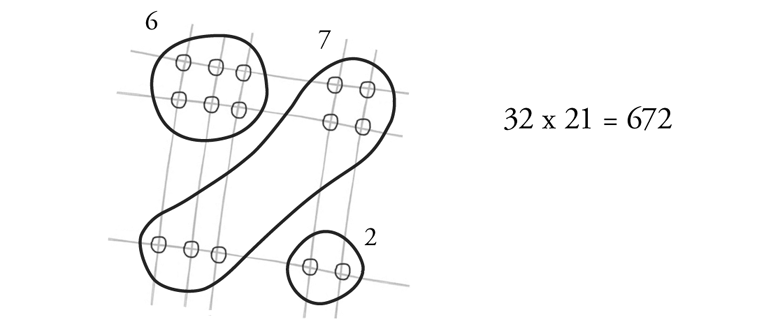Japanese multiplication works with lines. For example, if you want to work out 2 x 2 you draw two lines intersecting two lines and count the places they cross:

If you want to work out 23 x 2 you draw 23 as two lines, then a gap, then three lines. You then draw two lines the other way crossing them, as before. As you can see, we now have two sets of intersecting points, a group of 4 and a group of 6.

To work out a bigger number, such as 32 x 21, you will have even more intersecting groups. These need to be grouped together according to hundreds, tens and units as below:
With even bigger numbers you have to start carrying units across when you add your groups. Here is 132 x 16: the answer is not 192,012! When the intersected lines move into double figures you need to start carrying figures across, working from right to left:

Here is a table to show the steps you need to take when you have answers in double figures. Don’t forget to work from right to left!
This is what Hiko’s tattoo looks like:

The pirates work out that the arrows signify compass points – north and east. The lines of Hiko’s tattoo use the Japanese multiplication system to encode the coordinates for the island that Hiko’s father found. Here is how you work out those coordinates from Hiko’s tattoo. The dotted line is used to signify zero.

Once Hideaki has pointed out that Hiko’s tattoo represents the number 20,140, the pirates puzzle over its significance. It is Toby who figures out that the number is in fact the coordinates 20 degrees north and 140 degrees east.


